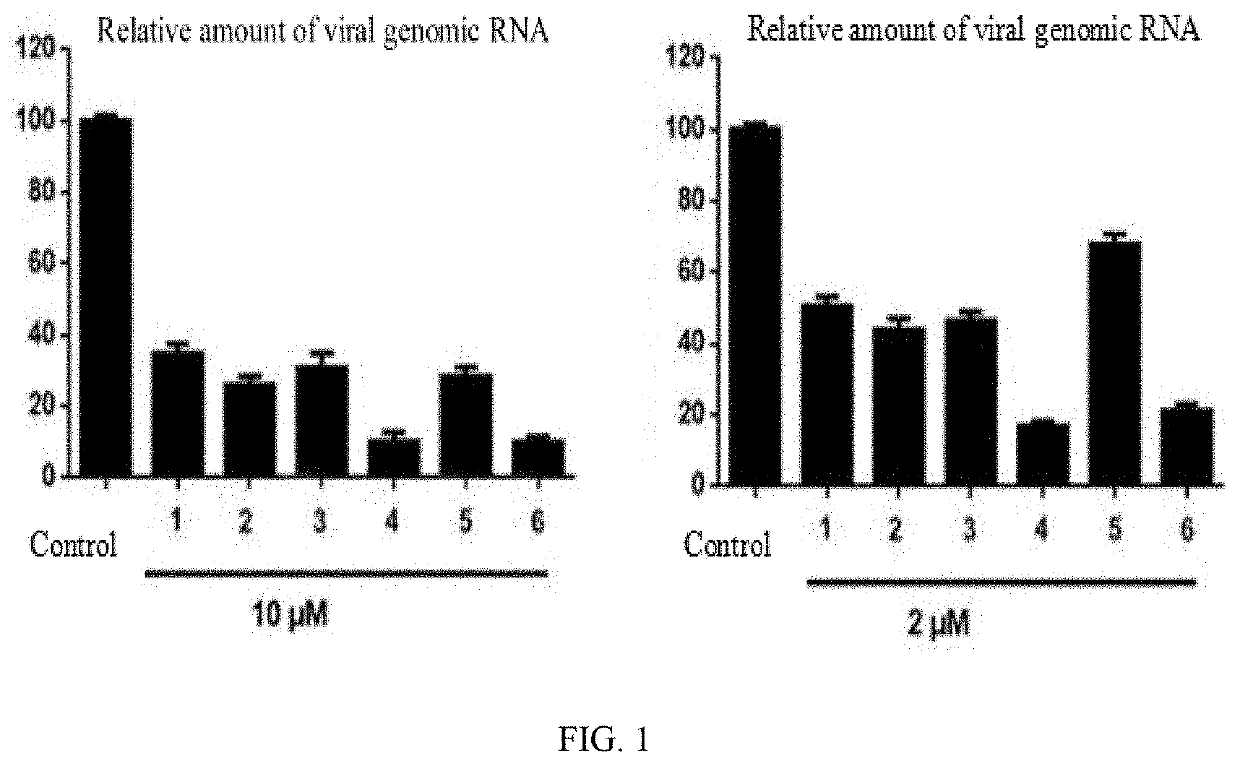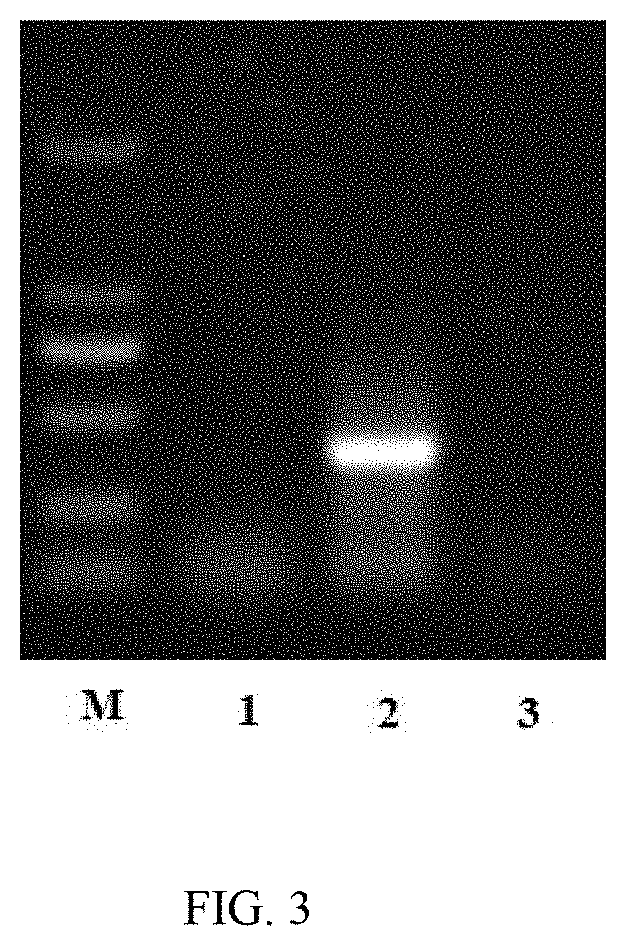Use of Bromophenol-pyrazoline Compounds in the Treatment of Porcine Coronavirus Diseases
- Summary
- Abstract
- Description
- Claims
- Application Information
AI Technical Summary
Benefits of technology
Problems solved by technology
Method used
Image
Examples
example 1
nce with Replication of Porcine Epidemic Diarrhea Virus (PEDV) in Cells by Bromophenol-Pyrazoline Compounds
[0035]This Example evaluated whether bromophenol-pyrazoline compounds can inhibit replication of porcine coronavirus in Vero E6 cells infected with clinically isolated strains of porcine epidemic diarrhea virus (PEDV).
[0036]Specific operation: pre-seeded Vero E6 cells (5×104 cells / well) were respectively pretreated for 1 h with different concentrations of bromophenol-pyrazoline compounds to be tested (2 μM and 10 μM), and then infected with porcine coronavirus (PEDV; MOI: 0.05) for 2 h. Then, a virus-compound mixture was removed, and the cells were further cultured with a fresh medium containing the bromophenol-pyrazoline compound. After 24 hours, a cell supernatant was collected, and vRNA in the supernatant was analyzed by qRT-PCR. The treatment without a bromophenol-pyrazoline compound was used as a control.
[0037]Experimental results: as shown in FIG. 1, in the Vero cells inf...
example 2
nce with Replication of Porcine Transmissible Gastroenteritis Virus (TGEV) in Cells by Bromophenol-Pyrazoline Compounds
[0038]This Example evaluated whether bromophenol-pyrazoline compounds can inhibit replication of porcine coronavirus in Vero E6 cells infected with clinically isolated strains of porcine transmissible gastroenteritis virus (TGEV).
[0039]Specific operation: pre-seeded Vero E6 cells (5×104 cells / well) were respectively pretreated for 1 h with different concentrations of bromophenol-pyrazoline compounds to be tested (2 μM and 10 μM), and then infected with porcine coronavirus (TGEV; MOI: 0.05) for 2 h. Then, a virus-compound mixture was removed, and the cells were further cultured with a fresh medium containing the bromophenol-pyrazoline compound. After 24 hours, a cell supernatant was collected, and vRNA in the supernatant was analyzed by qRT-PCR. The treatment without a bromophenol-pyrazoline compound was used as a control.
[0040]Experimental results: as shown in FIG. ...
example 3
Trial of Compound 4 in the Treatment of Diseased Pigs Infected with Porcine Epidemic Diarrhea Virus
[0041]1. PCR Detection of Viral Infection of Diseased Pigs
[0042]Through the PCR detection of diseased pig tissues at Zhucheng Pig Farm in November 2020, the type of viral infection was determined. The PCR results (FIG. 3) showed that, PEDV (porcine epidemic diarrhea virus) was detected in diseased pig tissue samples, but no transmissible gastroenteritis virus and rotavirus were detected.
[0043]2. Clinical Trial of Compound 4 in the Treatment of Diseased Pigs with Epidemic Diarrhea
[0044]Diseased pigs with epidemic diarrhea within 10 days of age were selected and randomly divided into 4 groups, i.e. untreated group, traditional Chinese medicine treatment group, compound 4 treatment group and lgY antibody treatment group, respectively. The traditional Chinese medicine treatment group was drenched with a compound decoction consisting of dandelion, Chinese violet, coptis, isatis root, etc., ...
PUM
 Login to View More
Login to View More Abstract
Description
Claims
Application Information
 Login to View More
Login to View More - R&D
- Intellectual Property
- Life Sciences
- Materials
- Tech Scout
- Unparalleled Data Quality
- Higher Quality Content
- 60% Fewer Hallucinations
Browse by: Latest US Patents, China's latest patents, Technical Efficacy Thesaurus, Application Domain, Technology Topic, Popular Technical Reports.
© 2025 PatSnap. All rights reserved.Legal|Privacy policy|Modern Slavery Act Transparency Statement|Sitemap|About US| Contact US: help@patsnap.com



